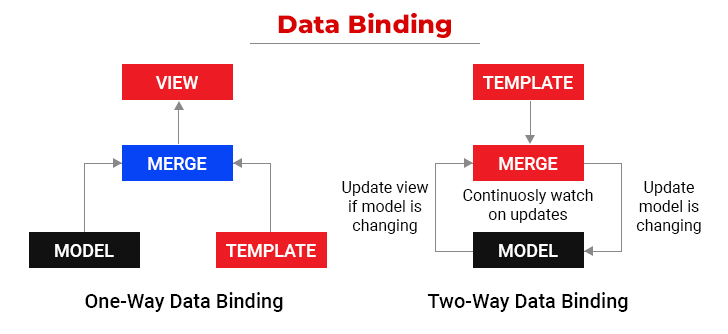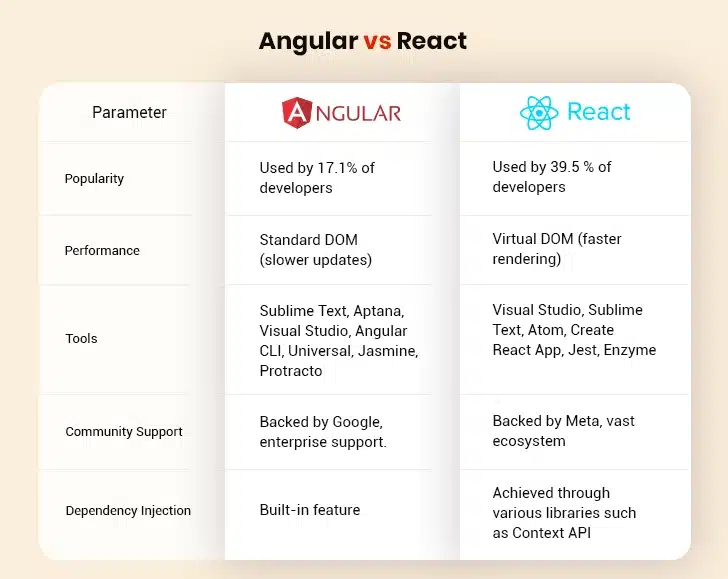Modern businesses face many challenges in web application development. Users expect fast, seamless experiences across all devices. Cross-browser inconsistencies create friction in user experience. Varying screen resolutions necessitate adaptable design systems. Tight deadlines and constrained budgets require efficient development workflows. JavaScript helps address these issues. The programming language works across browsers, reducing compatibility headaches. Its frameworks speed up development with component reusability and modular architecture. Its responsive design principles ensure adaptability across devices.
JavaScript remains the most widely used programming language for the eleventh consecutive year, according to Stack Overflow’s annual survey. It commands a staggering 62.3% market share, making it the go-to language for building responsive, interactive interfaces. For businesses planning to develop feature-packed web applications, JavaScript has proven to be a transformative technology.
Angular and React are the two most popular JavaScript resources that are extensively used for front-end web development projects. However, the real dilemma is how to choose between Angular and React. To solve this dilemma, this detailed comparative analysis of both Angular and React, based on several factors, will help users make an informed decision. Let’s get started.
Table of Contents
Angular vs. React – A Quick Rundown
Angular
Angular is one of the popular open-source frameworks developed and managed by the Angular Team of Google and the Angular developer community. This TypeScript-based framework is a complete rewrite of AngularJS, which was introduced back in 2010. Today, Angular has become a coveted choice for building robust, high-performing, and scalable single-page applications or enterprise-grade applications using TypeScript, HTML, and CSS. Unlike other web development frameworks, Angular offers two-way data binding, which creates a seamless synchronization of data between the model and the view. Lastly, Angular has a rich collection of features and integrated libraries that expedite front-end development.
Some Distinctive Features of Angular
- Dependency injection
- Two-way data binding
- Angular powerful CLI
- Virtual scrolling
- Directives
- Built-in libraries
- Opinionated architecture
React
React is a popular JavaScript library developed and maintained by Meta Platforms, Inc. (formerly known as Facebook). It is widely used to create dynamic and interactive user interfaces for single-page applications from reusable components. It is open-source, component-based, and uses a declarative style of programming to create seamless UX and complex UI. The best part of React is that it is based on the “learn once, write anywhere” principle, enabling developers to build scalable and high-performing applications for all platforms. This may be one of the reasons why React has become the preferred library for front-end development.
Some Distinctive Features of React
- Declarative views
- JSX advantage
- One-way data binding
- Virtual DOM
- Building blocks flexibility
Angular vs. React – Benefits
“At first, you are interested in everything that is the latest and shiny. Unfortunately, practice shows that it’s easy to slip on something, and what works best is what has been proven by thousands of companies and corporations. That’s why in large projects, I use more established technologies like React or Angular rather than frameworks that appeared ‘yesterday’.” – Nikolaj Osadcij, full-stack developer
Angular and React are widely used for web development. Angular’s opinionated structure and TypeScript reliance create a steeper initial learning curve. React’s less opinionated approach allows for a gentler entry but may require supplementation with third-party libraries for state management. While both benefit from extensive developer communities, React’s larger talent pool offers broader hiring options. Angular streamlines enterprise-scale projects with integrated tooling, whereas React’s modular flexibility suits iterative development. The choice depends on project scope, team expertise, and architectural preferences.
| Advantages of Angular | Advantages of React |
|---|---|
| Stable talent pool | Large talent pool |
| Strong type checking | Easy learning curve |
| Intuitive application structure | Faster development time |
| Cross-platform development support | Easy version upgrades |
| Rapid rendering of server-side | Server-side rendering |
| Improved developer productivity | Reusable code via components |
| Increased overall application performance | Improved load time and performance |
| Built-in features like Angular CLI and RxJS | Support for mobile application development |
| Built-in support for AJAX, HTTP, and Observables | Easy integration with third-party libraries |
Angular vs. React: A Side-by-Side Comparison
Angular and React differ in their core nature. Angular works as a complete TypeScript-based framework created by Google. React functions as a JavaScript library developed by Facebook (now Meta). This fundamental distinction shapes everything about how developers tackle projects.
Angular presents a full MVC (Model-View-Controller) architecture, giving developers a structured, opinionated environment. React, in contrast, offers a component-based architecture with greater flexibility and modularity. These architectural differences show up in several key areas:
| Angular | React | |
|---|---|---|
| Type | Full-fledged framework | JavaScript-based library |
| DOM Type | Real DOM | Virtual DOM |
| Data Binding | Two-way | One-way |
| Learning Curve | Can be steep for beginners | Relatively small |
| Language | TypeScript | JavaScript |
| App Structure | Fixed, complex, opinionated (MVC) | Flexible, component-based, open-ended, view-only |
| Abstraction | Medium | Strong |
| Dependency Injection | Supported | Not Supported |
| Popular Apps | Google, IBM, PayPal, Upwork, Forbes, Samsung | Facebook, Skype, Instagram, Walmart, Netflix |
| Performance | High | Relatively High |
How to Leverage AngularJS to Build Responsive SPAs
Angular vs. React: A Detailed Comparison
1. Popularity
React has gained popularity for its flexibility, simplicity, and performance. Its component-based architecture, unidirectional data flow, virtual DOM, and ease of integration with existing projects also contributed to its widespread adoption across various industries and company sizes. According to the annual survey conducted by Stack Overflow, React secured the second position in the list of popular technologies and web frameworks and is used by 39.5% of professional developers, whereas Angular is used by 17.1% of developers. Furthermore, React proudly boasts around 223k stars and 46k forks, whereas Angular proudly boasts around 97.7k stars and 26.2k forks. Lastly, React has shown consistent popularity on Google Trends over the past few years, whereas Angular has experienced some fluctuations in its popularity with some peaks and dips on Google Trends. Despite some shifts in its popularity, Angular has maintained a strong presence in industries where stability and standardization are paramount, such as healthcare and finance.
2. Data Binding
React uses a one-way data binding model, where data flows unidirectionally from parent to child components. On the other hand, Angular uses a two-way data binding approach that allows automatic synchronization between the model and the view. React employs a virtual DOM to optimize updates, whereas Angular uses a real DOM, and updates are made directly to the actual DOM elements. In other words, React virtual DOM offers better performance, whereas Angular real DOM updates may lead to slightly lower performance.
3. Learning Curve
React is acclaimed for its simplicity, ease of learning, and minimalist approach, making it a coveted choice for developers who are already familiar with JavaScript. React comes with exhaustive documentation, and its large and active community contributes to a wealth of resources, libraries, and tutorials. However, mastering this JS library entails understanding its ecosystem, including state management libraries like React’s Context API or Redux, as well as building tools like webpack or Parcel.
On the other hand, Angular is a powerful, feature-rich framework that introduces concepts such as dependency injection, routing, two-way data binding, decorators, and forms management, making it challenging for beginners. The learning curve of this full-fledged solution tends to be steeper due to its CLI tools, built-in features, and extensive documentation. Furthermore, Angular relies heavily on a more opinionated structure, which can be overwhelming for newcomers. However, once mastered, this TypeScript-based framework provides a more structured approach to application development, making it ideal for enterprise-level projects where scalability and consistency are critical.
4. Performance
Performance is a critical aspect that needs to be taken into account when building web applications. React proudly boasts of a virtual DOM, which plays a significant role in enhancing performance since it allows web developers to make changes without rewriting the entire tree structure, resulting in faster rendering and enhanced overall performance. Furthermore, the data binding process of React is unidirectional, meaning that data flows in a single direction, which helps optimize rendering and prevents unnecessary re-renders of components. On the other hand, Angular employs a two-way data binding mechanism, which may sometimes lead to performance issues, especially in large-scale applications with complex data bindings. Now, let’s quickly compare the performance between Angular and React for different processes with execution time.
Angular vs React: Performance Time
| Action | Angular | React |
|---|---|---|
| Loading | 10 ms | 7 ms |
| Scripting | 173 ms | 102 ms |
| Rendering | 3 ms | 6 ms |
| Painting | 2 ms | 4 ms |
| System | 73 ms | 129 ms |
| Idle | 3034 ms | 3024 ms |
| Total | 3295 ms | 3289 ms |
5. Essential Tools
React supports a range of code editors, including Visual Studio, Sublime Text, and Atom. For setting up a project in React, developers often use the Create React App (CLI) tool. Server-side rendering is completed with the help of the Next.js framework. Furthermore, applications written in React can be tested using tools like Jest and Enzyme. For debugging an application in development mode, developers may use a browser extension called React Developer Tools.
Angular comes with a comprehensive suite of tools right out of the box for project setup, editing, rendering, and testing. For instance, Angular is compatible with a host of code editors such as Sublime Text, Aptana, and Visual Studio. A project in Angular can be quickly set up with the help of Angular CLI (command line interface). Server-side rendering is completed with Angular Universal. Lastly, tools like Jasmine, Protractor, and Karma are widely used for testing an Angular project.
Why Businesses Must Select React for Web App Development
6. Community Support
Community support is pivotal when deciding between Angular and React for web development projects. Backed by Meta Platforms Inc. (Facebook), React proudly boasts a vibrant and strong community of developers that actively contributes to its growth and adoption. The React community is renowned for many tutorials, rich documentation, and many plugins and libraries, available through platforms like NPM (Node Package Manager). This robust ecosystem of React ensures web developers have easy access to a wealth of resources, making it easier for them to learn new concepts, troubleshoot issues, and streamline development.
Angular also enjoys strong community support, thanks to its backing by Google and its widespread adoption in enterprise environments. The Angular community is acclaimed for its extensive documentation, dedicated Slack channels, and active forums, providing developers with many resources for learning and problem-solving. Furthermore, Google’s continued investment in Angular ensures its continuous evolution and long-term sustainability, with regular enhancements and updates to the framework.
7. Learning Curve
React’s minimalist design with no overly complicated features, no classic templates, and no dependency injection, makes it easier for developers to understand and work with, particularly those who have prowess in HTML and JavaScript. In other words, React is more accessible and user-friendly due to its simplicity and alignment with JavaScript conventions. On the other hand, Angular has a steeper learning curve owing to its opinionated architecture. Angular’s extensive documentation along with concepts like TypeScript and dependency injection can be overwhelming for newcomers.
8. Dependency Injection
Dependency Injection (DI) facilitates the creation and management of component dependencies. It promotes reusability, maintainability, and testability by decoupling components from their dependencies. In Angular, Dependency Injection is an inherent feature of the framework, whereas, in React, it can be achieved with the help of various libraries, such as React’s Context API or third-party libraries like InversifyJS.
9. Framework
Angular is a TypeScript-based framework used for building robust, scalable web applications. React, in contrast, is a JavaScript library that needs to be paired with a framework to build visually appealing, high-performing, and compatible UI.
Listed below are some React-based frameworks used by developers:
- Material UI
- Redux
- Ant Design
- NextUI
- Gatsby
- Theme UI
- React Fabric
- Onsen UI
React vs. Angular: When to Choose What
The choice between Angular and React depends on an organization’s project needs, team skills, and specific use cases. The decision should match their goals and technical requirements.
React works well with existing projects. Developers can apply it gradually to their existing codebases. This approach lets them make their pages more interactive without the need to start over from scratch.
Angular, on the other hand, works best for new projects or complete application rewrites. Its full-featured framework delivers the most value when teams are starting fresh rather than blending it with legacy systems.
| Ideal Use Cases for Angular | Ideal Use Cases for React |
|---|---|
| Single Page Applications (SPAs) | Content Management Systems (CMS) |
| Real-time Applications | Cross-platform Development |
| Progressive Web Apps (PWAs) | Real-time Dashboards |
| Applications with Rich User Interfaces | User Interfaces with Dynamic Content |
| Feature-rich and Enterprise-grade applications | E-commerce Store Development |
Angular vs. React: Future Outlook and Trends
The front-end development landscape keeps changing, with both React and Angular adapting to meet new industry demands. Current market numbers tell where these technologies are headed.
React continues to dominate with 39.5% usage among professional developers compared to Angular’s 17.1%. This difference shows up in job markets too, where React claims 52,103 open positions versus Angular’s 23,070 in the US market.
The web development market is expected to reach $70.70 billion by 2026. This expansion creates plenty of room for both technologies to thrive. Project needs will ultimately determine which one gets picked for specific jobs.
Industry patterns suggest React will keep leading in situations demanding flexibility, but Angular will continue to excel in enterprise settings where structured architecture matters. Google’s ongoing support ensures Angular will stick around, even as React benefits from Meta’s backing and its much larger community.
Needless to say, both frameworks are embracing emerging trends like AI-driven development, improved server-side rendering, and micro-frontend architectures. These adaptations ensure they’ll stay relevant as the front-end world continues to evolve.
Summing Up
Both Angular and React have solidified their positions in front-end development, each offering a distinct approach to building dynamic web applications and user interfaces. As the web development realm continues to demand innovation, the choice between Angular and React is not just based on popularity but on the preferred programming paradigm, project requirements, project functionalities, project workflows, and the skills of developers. If you are also planning to invest in front-end web application development, you may partner with an AngularJS development company or consider outsourcing the project to seasoned React developers.








